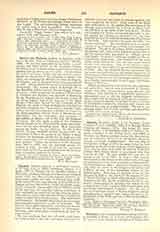

Gau, FRANZ CHRISTIAN, architect and archaeologist, b. at Cologne, June 15, 1790; d. at Paris, January, 1854. In 1809 he entered the Academie des Beaux-Arts, Paris, and in 1815 visited Italy and Sicily. In 1817 he went to Nubia, and while there he made drawings and measurements of all the more important monuments of that country, his ambition being to produce a work which should supplement the great work of the French expedition in Egypt. The result of his labors appeared in a folio volume (Stuttgart and Paris, 1822), entitled “Antiquites de la Nubie, ou monuments inedits des bords du Nil, situes entre la premiere et la seconde cataracte, dessines et mesures in 1819”. It consists of sixty-eight plates, of plans, sections, and views, and has been received as an authority. His next publication was the completion of Mazois’s work on the ruins of Pompeii. In 1825 Gau was naturalized as a French citizen, and later became architect to the city of Paris. He directed the restoration of the churches of Saint-Julien-le-Pauvre, and Saint-Severin, and built the great prison of La Roquette, etc. With his name, also, is associated the revival of Gothic architecture in Paris—he having designed and commenced, in 1846, the erection of the church of Sainte-Clotilde, the first modern church erected in the capital in that style. Illness compelled him to relinquish the care of supervising the work, and he died before its completion.
THOMAS H. POOLE

